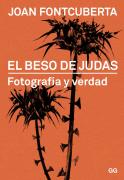El Beso de Judas

In un percorso di otto saggi critici sulla fotografia, scritti nel corso di una lunga esperienza professionale, Joan Fontcuberta riflette sulla creazione delle immagini e sulla cultura che le vorrebbe espressione della verità e prova dell’esistente. Ribellandosi alla credenza secondo cui il messaggio fotografico non necessiti di essere interpretato in quanto, per natura, “evidente”, Fontcuberta mette in dubbio l’idea di fotografia come specchio della realtà ed espressione della verità e il ruolo stesso del fotografo, che, crudelmente, dell’anima di ciò che ritrae restituisce solo la forma esteriore. Proseguendo con esempi tratti da vari ambiti della cultura – tra cui letteratura, cinema, teatro –, l’Autore mette in parallelo fotografia e scrittura e illustra i modi in cui l’immagine rappresenta o, piuttosto, semplicemente attrae. Si tratta di un classico della teoria della fotografia, già presente in bibliografia nei corsi universitari di comunicazione visiva.
In a series of eight critical essays on photography, written in the course of a long professional experience, Joan Fontcuberta reflects on the creation of images and on the culture that would like them to be an expression of truth and proof of existence. Rebelling against the belief that the photographic message does not need to be interpreted as, by nature, "evident", Fontcuberta questions the idea of photography as a mirror of reality and an expression of truth and the role of the photographer, who, cruelly , of the soul of what it portrays only returns the external form. Continuing with examples taken from various fields of culture - including literature, cinema, theater -, the Author parallels photography and writing and illustrates the ways in which the image represents or, rather, simply attracts. It is a classic of the theory of photography, already present in the bibliography in university courses of visual communication.